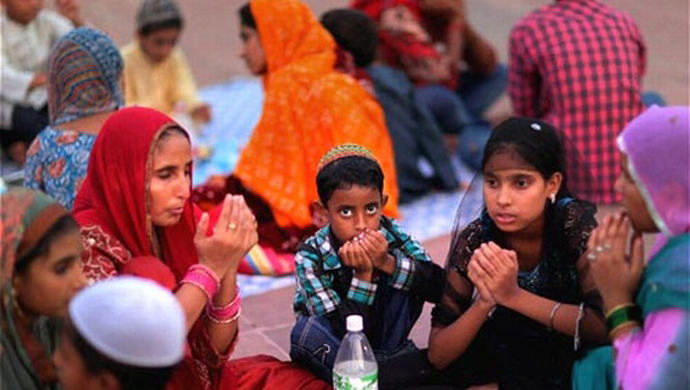By Saket Suman
Book: Azadi’s Daughter: Being a Secular Muslim in India; Author: Seema Mustafa; Publisher: Speaking Tiger; Price: Rs 299; Pages: 185
This rather unusual book is about the eventful journey of a woman who, as a “secular Muslim” in independent India, and has seen the good, bad and the ugly of our society. A fitting reminder of the “Idea of India” that our founding fathers dreamt of, the author lays bare the many prejudiced notions against Muslims in the country.
What is it that makes the Muslims of India live in some sort of fear? Is there a communal colour to every aspect of our day-to-day lives? Have the wounds of partition been forgotten? And is the harmonious lifestyle of our country rapidly vanishing? Seema Mustafa, a seasoned journalist, recalls the journey of her life as a Muslim in India and takes note of all that has gone into shaping her life, ideals and beliefs — and presents her reasons for living in fear at the present juncture.
Some of the most constant notions that many tend to associate with our Muslim population at large — their staunch belief in the supremacy of religion over other aspects of their lives and blaming the system for discrimination on the basis of religion, among other similar stereotypes — are outrightly challenged in this insightful memoir.
Mustafa, who has been a journalist since the age of 19 and has worked at leading newspapers, asserts that she is a Muslim culturally — but not religiously. She believes it is of utmost importance to make this point clear.
And while those outside the Islamic world fail to identify this characteristic feature of many Muslims in India, Mustafa reminds us that there are problems within. Fundamentalists within Muslim society often look down upon those who share this cultural identity and consider them “less islamic” than the staunch believers.
Mustafa recalls an anecdote from her childhood when her father — Colonel Mustafa — was hounded by a maulavi in a mosque for inappropriate attire. Colonel Mustafa roundly chastised the maulavi, saying he has led prayers in far off deserts in “most inappropriate clothes” and that such restrictions do not apply to those who are Muslims not religiously but culturally.
Mustafa then goes on to paint a vivid picture of how her upbringing was marked by similar experiences and how she and her family have come across several instances when Hindus have come to the aid of their Muslim brethren in some tense situations.
All said and done, these are but a part of discourse that has generally been prevalent in many similar books. Most recently, Saeed Naqvi’s memoir “Being the Other” also threw light on several of these aspects with equal impact.
Mustafa incisively charts the events which have slowly begun to erode the tolerant, diverse ethos — the government’s handling of the Shah Bano case in the 1980s, the demolition of the Babri Masjid in the 1990s, the mass arrests and torture of Muslim youth in the aftermath of 9/11 and the 2002 Gujarat riots. She also examines the current state of secularism where people face marginalisation and the threat of violence merely for exercising their right to religion, to livelihood and even to what they eat.
One significant question that Mustafa answers — for those who may have any doubts — is the national identity of Muslims. She impresses upon the fact that Indian Muslims chose to stay back in the country after independence and are proud of their identity and that their struggle for the issues that concern them should not be confused with being either against India or pro-Pakistan.
Again sharing an anecdote, Mustafa writes that of her father’s five siblings, the eldest brother had opted to leave for Pakistan at the time of partition while the others chose to stay back. In 1971, his only son — a Pakistan army officer — was taken prisoner of war by the Indian Army, and his son-in-law was killed when the Pakistani submarine Ghazi was destroyed off India’s east coast in circumstances that are not clear to this day.
“The grief was overwhelming,” notes Mustafa. “The brother here shared what the brother there was going through. But their tears were not for Pakistan; they were for a brother’s suffering.”
It was then that the author understood that one could cry for relatives without caring for the country they lived in, and that the tears shed by Muslim families in India were never for Pakistan but for their relatives across the border.
Highly anecdotal, the book presents several such instances to make for what is an extremely relevant memoir as well as political commentary.


